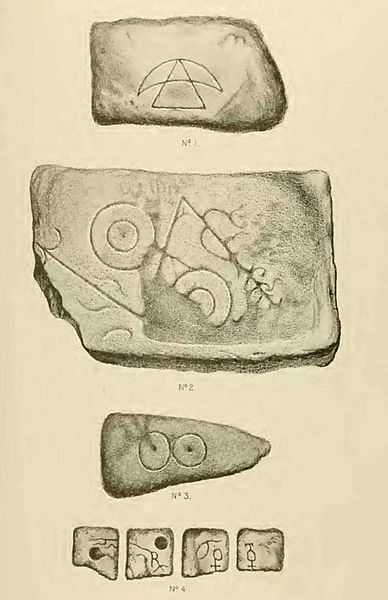Image: Pictish stones near Stonehaven, Stuart 1867 plate XV (cropped)

Description: John Stuart's description: PLATE XV. AT STONEHAVEN The fragments in this Plate were found in the sea at the base of a peninsnlated rock near Stonehaven called “Dinacair,” where other fragments of a like character, which are figured in vol. i. (Plate XLI.), were formerly picked up. It has been shown by Mr. Thomson of Banchory 3 that these fragments are all stones of different sorts, and not portions of one larger monument. It appears also from Mr. Thomson’s observations that in all probability the rock of Dinacair was formerly united to the coast by a neck of rock which has been washed away. Its name, Dun-a-Kair, suggests that it had been one of the sites on the coast so frequently selected in early times for purposes of defence, like Dimottar and Burgh-head, while it seems likely that it may also have been chosen for one of the ecclesiastical settlements of our early missionaries. In Ireland the monastic establishments were frequently placed within the raths, and there can he no doubt that an early church had been placed within the limits of that at Burgh-head, where fragments of sculptured stones have been found, some of which are figured in this volume.
Title: Pictish stones near Stonehaven, Stuart 1867 plate XV (cropped)
Credit: Stuart, John (1856). Sculptured Stones Of Scotland, pp 9 & plate XV. Spalding Club. https://archive.org/details/sculpturedstones01stua/page/n5 Stuart, John (1867). Sculptured Stones Of Scotland Vol 2. Spalding Club. https://archive.org/details/StuartJSculpturedStonesOfScotlandVol21867/page/n5
Author: John Stuart 1813-1877, illustrator Andrew Gibb 1821-1881
Usage Terms: Public domain
License: Public domain
Attribution Required?: No
Image usage
The following page links to this image:

